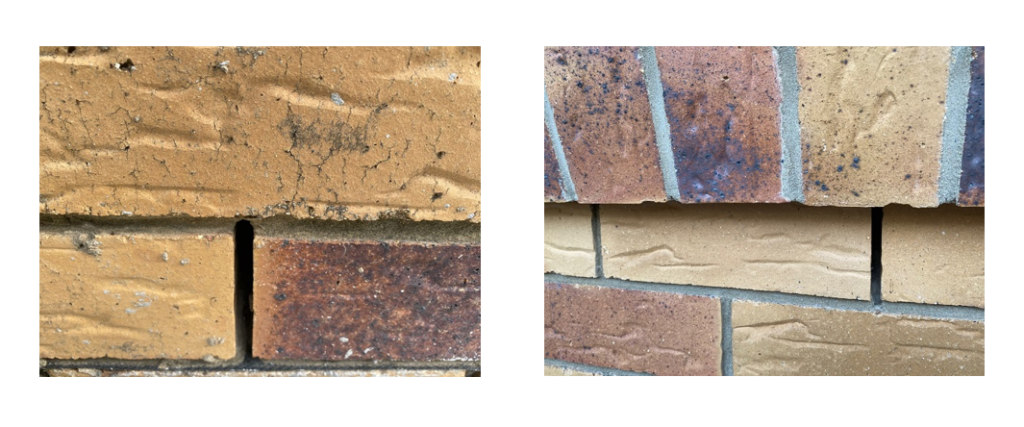Weep holes: What are they and do I really need them anyway?
What are weep holes and why are they top of the list when conducting building inspections in QLD? Although you may not even know what they look like, are weep holes even necessary?
Insights from the inspector: An interesting (yet concerning) trend caught my eye in my recent building inspections. Many people, swept up in the excitement of home gardening, unknowingly risk their homes’ safety. They place garden beds right against their house walls. This might not seem like a big deal at first, but it’s causing a major problem: blocked airflow. These garden beds cover weep holes – small openings crucial for letting moisture out and air in. When these are blocked, your home can’t “breathe” properly. They also create a great haven for pests, which you also don’t want!
These tiny, almost hidden vents can mean the difference between a liveable home or expensive damage to your potential new dream home. So, here’s your reminder of the importance of paying attention to the little details, like weep holes.
What do weep holes look like and why do they need to be inspected?
Weep holes are gaps in the brickwork that usually sit 75 mm above the foundation. They are critical to allowing moisture to escape and ventilate the home’s interior. Without adequate and functioning ventilation in a home, all sorts of issues can develop, such as dry rot in the wooden framework, mildew, mold, and in the worst cases, “leaky building syndrome.” This is when moisture gets into and builds up between a house’s exterior and interior materials, and it rots away around you.
Also be sure to look at brick for efflorescence or salt damp which can also be caused by moisture issues.
What do compromised weep holes look like and how do I know they are not functioning?
Compromised weep holes are a common external problem inspectors find. Weep holes should have at least 75mm clearance from the ground and not be blocked or covered and must meet the Australian Standards AS300 for masonry structures. Typical weep hole obstructions could be a raised concrete path, raised garden bed, or decking. Any weephole with less than 75mm clearance could be a big welcome flag for termites and other pests such as bees or wasps, although specific measures can prevent the bees and wasps.
Mud tracks or dirt tracks can signify termite entry, and mud nests or weeping honey surrounding these holes should be a sign to get a pest inspection. Weep holes should be the size of the standard gap between bricks and look like missing grout rather than a gaping hole. They become an entry point for vermin like mice, snakes, and small rats if they are too big.
Weep holes saving Brisbane homes after the floods
Seasonal flooding continues to engulf houses across Brisbane throughout the summer. Water enters through doors and windows and at times, it has been high enough to engulf the homes from the eaves down. Once the water subsides, there is a lot to do, pull up flooring, remove wet gyprock and allow things to dry out.
In a flood scenario, the weep holes will allow the moisture to correctly disperse from your home and prevent mould and rot in your frame. Bricks are not a waterproof barrier in your home and will draw in moisture. Weep holes allow correct ventilation to prevent rising dampness in your brick walls and rot in the framework.
Protect your investment – book a comprehensive pre-purchase building inspection
Obtaining a professional building inspection with attention to detail, especially for the tiny details hiding huge issues, can save you thousands. Contact us at Action Property Inspections. With over 30 years of experience and hundreds of five-star reviews from happy customers, you can be confident that even the tiny details are important to us.
What other external house issues can escape your attention? Learn more here.


